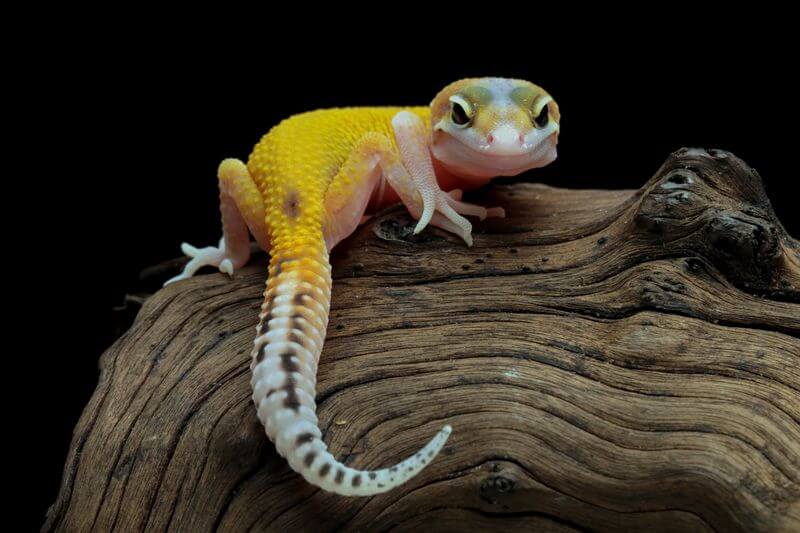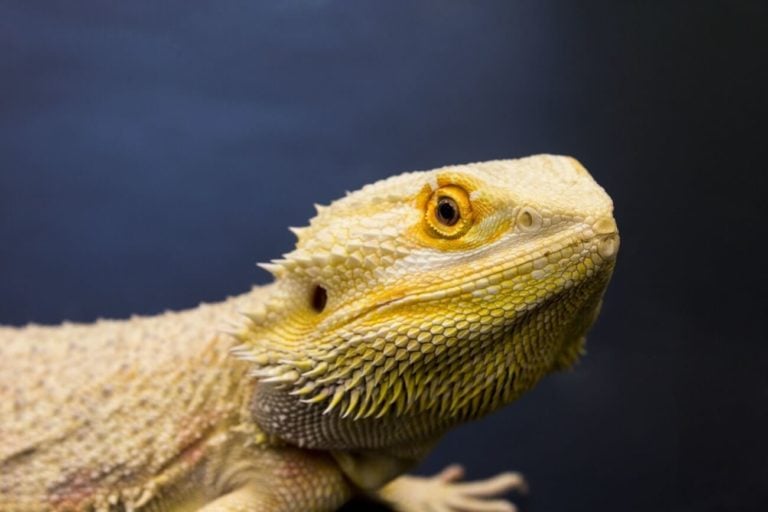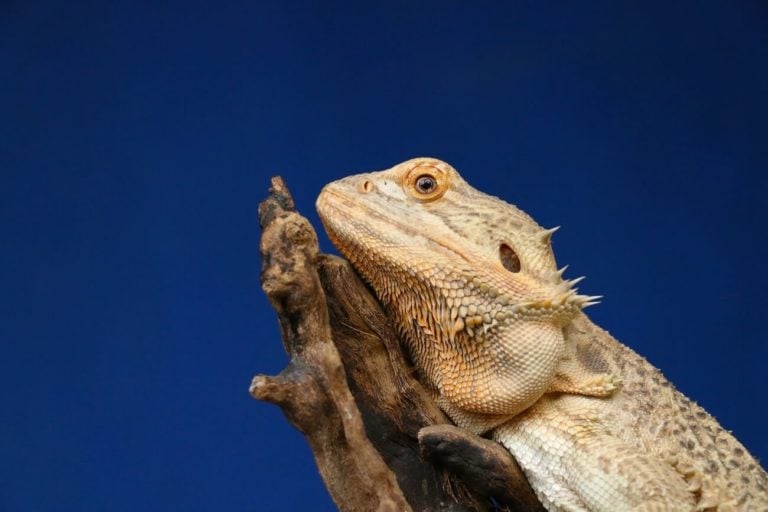Knowing what to do when your leopard gecko drops its tail is an important part of ownership. While it might not happen on your watch, it occurs often enough that you need to be prepared.
This guide will cover why leopard geckos lose their tails, and what you should do about it.
Table of Contents
Why Do Leopard Geckos Drop Their Tails?
A dropped tail can be a surprising phenomenon to witness. There’s nothing stranger than seeing a creature lose an appendage and watch it twitch on the ground. But before you panic, those events are common.
Leopard geckos have the ability to drop their tail at will. It’s a defense mechanism they share with many creatures. It occurs in several species of reptiles, spiders, undersea animals, and more.
But why do they do it? Here are some common reasons.
Responding To Threats
A leopard gecko dropping its tail is a valuable defense mechanism. While captive leopard geckos live in safe environments, wild lizards aren’t so lucky. They’re relatively low on the food chain, so they’re the target of many predators.
In those cases, tail-dropping can be a literal lifesaver. Whenever a leopard gecko faces threats, they can drop their tail to get away.
Sometimes, dropping the tail is how these lizards evade capture once a predator already has a grip on them. In other cases, the behavior serves as a distraction.
Whenever a leopard gecko drops their tail, the appendage moves and twitches. That distraction gives the lizard enough time to escape and find safety.
In captivity, leopard geckos are less likely to drop their tail in response to a threat. But it can still happen. For example, your lizard might go into defense mode if another pet, such as a cat, gets too close.
You may also observe tail-dropping in younger lizards. Juveniles are more likely to think threats exist when they don’t. They’re more sensitive and less socialized, so they tend to feel fear more than their adult counterparts.
That’s why proper socialization and exposure to human contact are important.
General Stress
Unfortunately, leopard geckos can also drop their tails when no obvious threat exists. Stress and fear can cause these lizards to lose their tails.
Like earlier, younger leopard geckos are more likely to drop their tails due to fear or stress. They’re still learning the ropes and aren’t used to their surroundings yet. As a result, they respond strongly to uncomfortable situations.
Expert Tip: Handling your gecko before it’s ready is a common cause of juvenile tail-dropping. The same goes for force-handling your adult gecko when it’s already stressed or uncomfortable.
Tail-dropping can occur when you least expect it. Some owners witness it when cleaning the leopard gecko’s habitat or attempting to handle their lizard. If you’re not careful and don’t pay attention to your pet’s well-being, you could inadvertently put them in a stressful situation that encourages them to detach the tail.
Even environmental conditions can be a factor in this behavior. Leopard geckos are relatively easy to care for, but they have their ecological preferences all the same. Failing to get the temperature, lighting, and humidity right could create an ongoing source of stress that results in tail-dropping.
Getting “Unstuck”
Sometimes, tail dropping is a mechanism that helps leopard geckos get out of tight spots! In the wild, this unique ability can save the gecko’s life.
Leopard geckos are curious creatures. They love to explore their surroundings. However, that fat tail can get in the way.
These lizards can wriggle their way into tight crevices or fall into wedges in your decorative items. Sometimes, they’ll mess with the environment too much, causing heavy objects to fall onto their tail.
Whatever the case, tail-dropping allows the leopard gecko to free themselves from an otherwise life-threatening situation.
Treating An Illness Or Physical Injury
Finally, a leopard gecko can drop its tail in an attempt to treat an illness.
These reptiles are hardy but not immune to injury or health problems. Because their tails are so big, injuries are more common than most realize.
Tiny cuts and wounds allow bacteria to invade your gecko’s body. The result is tail rot and infection! When that happens, your leopard gecko may drop its tail to prevent the disease from spreading to other body parts.
Treatment Options
A leopard gecko losing its tail is a natural biological function for these lizards, so they know how to deal with the experience. However, you can do a few things to help your pet recover and heal.
Address The Stressor
The first thing you should do is address whatever caused your leopard gecko to drop its tail. Check the environmental conditions of the tank and look for any potential concerns. You can also reflect on when your lizard lost its tail to see if you inadvertently put it in a stressful situation.
Knowing what caused your pet to leave its tail behind is important. You must eliminate the stressor and give your leopard gecko time and space to orient itself.
Examine The Stump
Next, it’s a good idea to remove the tail and take a closer look at the stump. It can be alarming, but you must check to ensure there’s no infection.
Some vets and reptile experts recommend cleaning the tail stump and applying an antiseptic. The fresh wound can become infected, so it’s a good idea to have that extra protection. Use reptile-safe antiseptic products.
If you’re uncomfortable doing this, take your leopard gecko to a vet specializing in exotic animals. You should also seek veterinary care if you notice any redness, swelling, or discharge.
Adjust The Habitat
Your leopard gecko will walk around for several weeks with a fresh wound. The risk of infection is high during this period.
One way to minimize those risks is to do a deep clean. Wipe down every surface with a reptile-safe disinfectant to eliminate bacteria. Then, swap out the standard substrate for clean paper towels.
Paper towels or newspapers aren’t ideal for an everyday substrate, but they can be beneficial after a tail drop. Loose substrates like soil and clay mixes contain particulates that can enter the tail stump wound.
That’s not an issue with paper, so it’s good to use while your gecko’s tail regrows.
Isolate Your Gecko
If you keep multiple leopard geckos in one habitat, it’s time to isolate the one that dropped its tail. That fleshy stump could make the lizard a target for others. The remaining geckos may become aggressive, leading to further injury and stress.
Offer More Food
Your leopard gecko will need to regain its strength to regrow its tail. After detachment, provide your lizard with clean water and more food than usual.
Expert Tip: Removing any leftovers your lizard doesn’t eat after 15 minutes is important. But don’t skimp on meal sizes. Allow your gecko to eat more than usual within the 15-minute window.
How Long Does It Take For Them To Regrow Their Tail?
The regrowth process can vary for every leopard gecko, but most return to their old selves within two to three months. These lizards have powerful regenerative properties; you can observe your gecko regrowing its tail in real time!
The tail stump wound will typically close in three to four weeks. Then, a new tail will develop in another four weeks or so. All in, it’s usually around 60 tails from drop to regrowth.
Of course, some leopard geckos can take much longer. Occasionally, they might take several months to a full year to regrow their tail. It all depends on their health and strength.
Providing a hearty diet during the regrowth process is the best thing you can do to speed things along.
Don’t be surprised if the new tail looks different from the old one. New tails are usually shorter and blunter. The skin may be a different color, too.
Unlike the first tail, the new growth won’t have any bones. It’ll only contain cartilage.
Does It Hurt When A Leopard Gecko Drops Its Tail?
Seeing a leopard gecko lose its tail is a worrisome experience for pet owners. You’d think that losing an appendage would be an excruciating experience! Fortunately, that’s not the case.
Leopard geckos have unique biological functions that minimize pain. For example, the tail has special connective tissue that can easily break off. Surrounding that tissue are vasoconstrictive muscles.
The muscles immediately constrict when the connective tissue breaks off to detach the tail. The result is very little blood loss and no pain.
It’s still wise to observe the fracture point. You must also give your leopard gecko time to recover. While it’s not physically painful, tail-dropping is still stressful for these lizards.
How Many Times Can A Leopard Gecko Lose Its Tail?
Not every lizard species has the ability to regrow their tails. Those that do may have a limited number of times they can go through their experience. For example, some species can only regrow their tail once or twice in their lifetimes.
For leopard geckos, those limitations don’t exist. These reptiles can drop their tails several times without any issues.
Of course, things can become more challenging as your gecko gets older. It takes considerable energy to regrow a tail, and it becomes more difficult with time. It can take a senior gecko substantially longer to regrow its tail than a juvenile.
It’s not uncommon for older leopard geckos to remain tailless for the rest of their lives.
Conclusion
As you can see, it’s usually not a cause for concern when your leopard gecko drops its tail. However, it’s always worth going through this list to make sure you don’t need to take any action (for the wound or their enclosure).
We hope you found this guide helpful. If you have any thoughts or questions we’d love to hear them!



